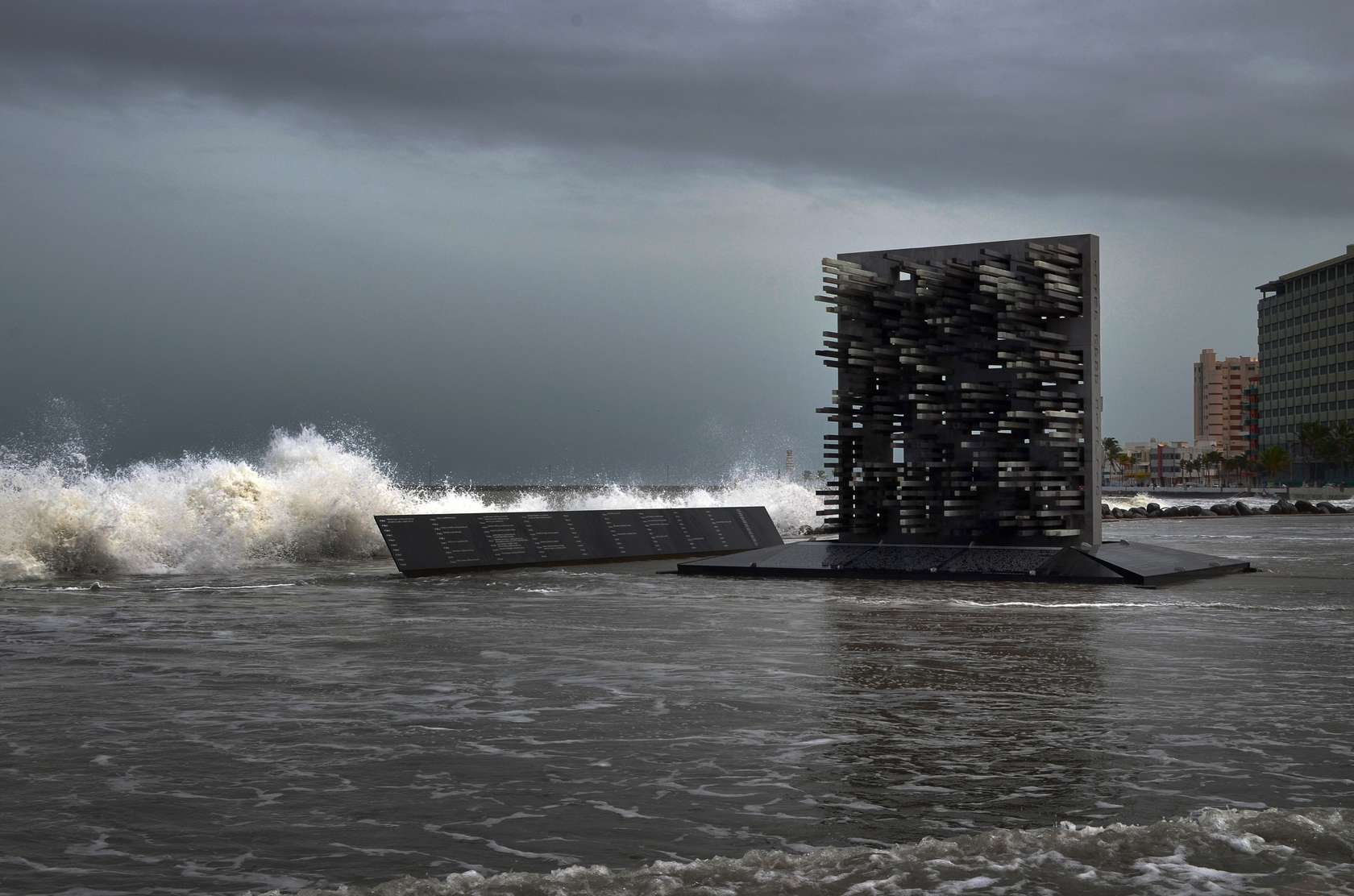Jewish Group
Related: About this forum100 Years of Jewish Immigration Through Veracruz Port in Mexico: Parallel Lives

The Project conceptualizes a bearing wall that supports 100 sculpted stone pieces on one side and 400 suspended stone lines on the other side, symbolizing Mexico as the gate to its land.
Each of these 100 pieces, commemorate each year that the Jewish community has been living in Mexico, that they now consider theirs. At the same time those commemorative pieces with rough and robust finishes tell us about the ships and immigrants arriving.
http://architizer.com/projects/100-years-of-jewish-immigration-through-veracruz-port-in-mexico-parallel-lives/
Xipe Totec
(43,890 posts)On the opposite side of the wall the 100 pieces multiply to 400, demonstrating the birth of the new families. These 400 pieces experience a refining and polishing process while penetrating the wall, symbolizing a Mexico that offers overcome opportunities, facing a new life as a community.
What the author of the article missed, is the symbolic meaning of the number 400.
400 in the Nahuatl tongue, Centzon, does not only mean the literal 400, it is also the equivalent of infinity, or countless.
The mocking bird is called Centzontle; the bird of 400 (countless) voices.
Thus, from 100 representing the years, to 400 representing the countless Jewish Mexicans now enriching our culture.
It is a beautiful, though often missed point of the sculpture.
ismnotwasm
(41,992 posts)Thank you-- this is so very interesting to me
![]()
Xipe Totec
(43,890 posts)It fills me with pride to think that my native country extends the welcome mat to my ancestors; those who have still retained their Jewish heritage.
As a converso, a descendant of Jews forced to convert to Christianity in the 1490's it gives me great satisfaction to see Judaism plant roots on fertile Mexican soil.
Welcome, brethren. May you long live in the land of the sun, and enrich this land blessed by God and embraced by all who love her.
Behind the Aegis
(53,961 posts)I am unfamiliar with Jewish life in much of SA, with the exceptions of some for the Caribbean, Brazil, and Venezuela. I know some of those places actually still have Ladino speakers, which is rapidly dying. I once read, long ago, that some of the first Jews to come to the New World were "Christians" who were forced to convert in Spain and Portugal. Upon arriving in the New World, they secretly started practicing Judaism under the nose of the crown. I can't remember where they were, I want to say it was some of the island nations.
Interesting find.
Xipe Totec
(43,890 posts)New Mexico, Arizona, Texas, California, Sonora, Chihuahua, Nuevo León, and Tamaulipas are thick with Sephardi. Some still remember whence they came. some have forgotten. But one of the staple breads of northern Mexico is called pan semita; Semite bread. And the dreidel top still survives under the name "quita y pon" (put and take away). Women in ranches deep in the mountains, blue or green eyed and blond haired still wear headdress reminiscent of middle eastern styles of centuries ago.
The blood is there though the traditions and rituals have been lost.